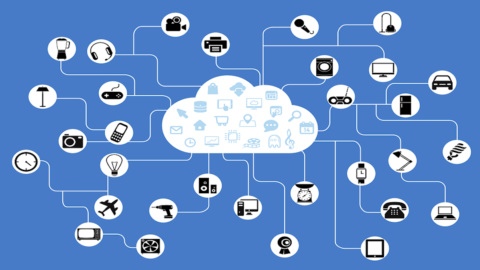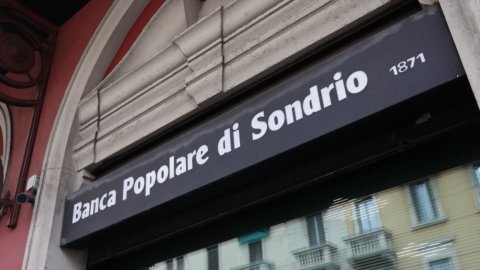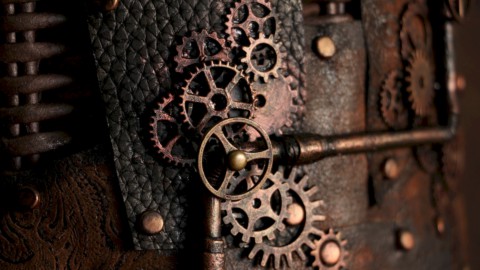The connected home is taking off. The Internet of Things is increasingly entering the homes of Italians and the market for IoT solutions for Smart Home in our country it was worth 185 million euros in 2016, with a leap of +23% compared to the previous year. But its potential is truly enormous, because the connected home is proposed as the fulcrum of the "internet of things" ecosystem, capable of pulling various key sectors of Made in Italy behind it. To say it is Smart Home research of the Internet of Things Observatory of the School of Management of the Milan Polytechnic presented on Thursday morning.
Security, appliances or smart boilers and the possibility of controlling them from afar are the most popular aspects of consumers even if, according to the study, 82% of the market is still linked to the traditional supply chain, made up of installers and distributors of electrical material. However, the share of "new" channels such as retailers, eRetailers and insurance companies is growing, which together represent 18% (about 30 million euros). The possible uses are many and varied, but the majority of over 290 solutions for the connected home surveyed in Italy and abroad (31%) is dedicated to safety – between surveillance cameras, locks, connected video intercoms and motion sensors – followed by energy management, such as solutions for the remote control of household appliances (10%), the management of heating and cooling systems (8%), the consumption monitoring of electrical devices (10%).
The offer of products for the Smart Home is constantly evolving. 68% of the solutions on the market are "Do It Yourself", with a simplified installation process, even if not all users are able to do without a technician: 70% of those who bought connected products turned to installers or small retailers. 52% of solutions today are offered by startups, which often develop complementary proposals to those of established brands.
But in these months even the large operators are entering the Italian market “Over The Top” with hubs equipped with a voice assistant to dialogue with connected objects (Google Home, Amazon Echo, Apple Home): the entry of the big brands will certainly push the development of the connected home, make interoperability between the various objects easier (which still remains a major barrier) and will be essential for increasing consumer confidence.
“The Internet of Things is starting to enter the homes of Italians, but what we are witnessing is only the beginning of a growth path with great potential – he says Angela Tumino, Director of the Internet of Things Observatory -. Today, large global players, startups, retailers, manufacturers, insurance companies, utilities and telecommunications operators are moving towards the connected home. To truly open the door to innovation, it is essential to offer new services to consumers: the most basic ones such as installation, still essential for a large portion of the population, and the advanced ones that can convince users who are still skeptical about the value of a connected home" .
“Smart Home applications make it possible to collect a great deal of data on the functioning of connected devices and on the behavior of people in the home: this will be one of the crucial aspects for market development, even if the strategies for data exploitation are still poorly defined by the companies – he adds -. And it is essential to pay close attention to the protection of privacy and security, because consumers tend to be reluctant to share their data, unless they receive concrete benefits in return".
Sales channels
In 2016, areas dedicated to the Smart Home were created for the first time in electronics stores, the first proposals were launched in the world of large-scale retail trade (supermarkets, hypermarkets, discount stores), while a moderate diffusion in do-it-yourself shops was noted -te and sales sections are visible on the online sites of the main eRetailers. Despite still limited volumes (approximately 20 million euros, 13% of the market), retailers and e-Retailers play an important role as they can act as a real showroom of products, which are now within the reach of an ever wider public.
With some barriers to overcome: “Manufacturers' communication is often limited and not very effective, promotional flyers are not enough to describe the characteristics and benefits of smart objects – notes Angela Tumino -. Furthermore, the personnel in the stores are not always adequately trained, even if the hiring of specialized and dedicated personnel is planned during 2017”.
Even with still embryonic levels, utilities and telco operators have also started to promote products and services for the Smart Home. The former combine classic solutions – such as monitoring energy consumption – with products for anti-intrusion and video surveillance. While the telcos are starting to offer data SIMs with tariff plans designed for Smart Home applications to be inserted in burglar alarms, boilers, thermostats, or directly connected products with an associated connectivity subscription. Today in Italy, six insurance companies also offer home policies linked to the presence of connected objects (one more than the previous year) and some large operators are working on developing their offer, but the market is still not very dynamic. Smart insurance policies are not aimed only at homes, but also at offices and small businesses for the detection of floods, fires or any intrusions, to which a 24-hour assistance service is associated. The number of offers for the wellness (for example wearable devices with discounts on the policy if you practice physical activity) or for eHealth (discounted policies if associated with the purchase of tools capable of monitoring vital parameters).
“Among the numerous sales channels available, the traditional supply chain currently maintains a dominant position on the market, but must innovate to keep up with its competitors, with new players on the offer and alternative channels on the horizon – comments Angela Tumino -. Installers and builders demonstrate limited knowledge of products and services and have completed few projects so far. The architects have a good awareness of the relevance of the theme, but still a superficial knowledge. Home automation manufacturers will have to get involved more and more personally and assign the right roles to the various players involved, taking charge of communication activities to strengthen the direct link with the final consumer".
Customers
26% of Italian consumers have at least one smart and connected object in their home and 58% intend to buy them in the future. This was revealed by the survey carried out by the Internet of Things Observatory in collaboration with Doxa on a representative sample of Internet users aged between 25 and 70, from which it emerges that Italians do not yet consider the Smart Home offer to be sufficiently ready: those who do not already have connected objects in their home in 50% of cases are "waiting for more technologically mature solutions" to purchase them.
Furthermore there is little confidence that personal data will be protected from possible hacker attacks: 67% of potential buyers are concerned about the risk of malicious people accessing or controlling connected objects. Safety is also confirmed in first place among the preferences of consumers who have already purchased products (13%), followed by air conditioning (8%), heating (8%) and remote management of household appliances (6%).
In any case, for Italian consumers the presence of installers (such as plumbers or electricians) or small retailers is crucial: 70% of those who bought connected objects have turned to them and between 35% and 60% will do so. % (depending on the item) of who will buy in the future. 31% instead bought online and 30% through large-scale distribution channels, such as DIY or electronics stores. Own electronics stores stand out as emerging channels: half of consumers intend to buy smart items directly in these stores in the future.
Startups
There are 124 startups operating in the Smart Home globally, growing continuously (+26% compared to 2015), of which 89 financed by institutional investors and capable of raising a total of almost 1,2 billion dollars in the last three years. The solutions offered by startups are mainly in the field of security (22%), scenario management (20%) and monitoring of energy consumption (18%). Manufacturers, insurance companies, utilities and OTTs are also looking at new realities from an open innovation perspective, with partnership agreements or acquisitions.
Technologies
There are several short-range IoT technologies for the Smart Home, to which are added the LPWA (Low Power Wide Area) protocols, which help to cover specific needs. At least in the short term we do not see a convergence towards a single solution, but the heterogeneity of communication technologies is not necessarily an obstacle. “The fragmentation of solutions for the Smart Home, one of the main barriers for users who want to buy smart devices, is a phenomenon that appears to be declining – he explains Giovanni Miragliotta, Director of the Internet of Things Observatory -. Companies team up with each other, alliances and consortia are consolidated (such as the Open Connectivity Foundation which can count on the presence of over 300 members) and today it is possible to integrate services at a cloud level with a single interface towards users - for example the smartphone or a voice assistant for the home – overcoming the need for real interoperability between physical devices”.





